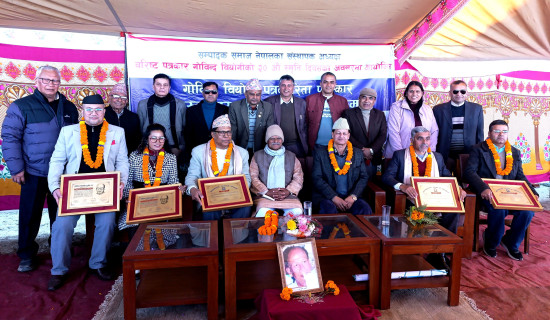- Saturday, 17 January 2026
Nepal's Evolving Tourism Landscape
In the dynamic realm of global tourism, Nepal has emerged as a beacon of successful public-private collaboration with the establishment of the Nepal Tourism Board (NTB) two and a half decades ago. This article delves into the transformative journey of the NTB, spotlighting its pivotal role in surpassing the one million tourist arrivals milestone, executing innovative campaigns, and setting ambitious targets for attracting two million tourists annually.
Founded in 1998, the NTB was conceived as a joint effort between the private sector and the government to invigorate tourism in Nepal. Early initiatives, such as the Destination Nepal Campaign in 2002/2003, the Mount Everest Golden Jubilee Celebrations, aimed to position Nepal as a diverse and appealing destination beyond Kathmandu's borders. For instance, the Destination Nepal Campaign strategically showcased Nepal's cultural richness, adventure offerings, and serene landscapes in international forums, contributing to a significant surge in tourist interest.
Strategic celebrations
Throughout its journey, the NTB strategically celebrated the Year of Tourism in 1998, 2011, and 2020. These celebratory years not only positioned Nepal globally but also diversified tourism, showcasing the nation's tourism prowess. In response to the devastating earthquake, the 'Nepal Now' campaign demonstrated resilience globally, emphasising that tourism possibilities endured despite adversity. The 'Nepal Now' campaign, launched after the earthquake, showcased Nepal's resilience and commitment to tourism, conveying a powerful message that despite challenges, the country was ready to welcome visitors.
As the global economic downturn induced by the COVID-19 pandemic unfolded in 2020, Nepal's tourism sector faced unprecedented challenges. The NTB, an instrumental player in the country's tourism, grappled with the aftermath, prompting a crucial assessment of its role.
Despite Nepal welcoming foreign tourists for over seven decades, the tourism sector's progress has been gradual, with the reinstated multiparty system in 1991 opening doors for opportunities. Despite the challenges posed by the pandemic, the NTB leveraged digital platforms and virtual experiences to keep Nepal visible on the global tourism map.
Recognising the need for stability in a volatile political climate, discussions led by tourism experts and supported by the UNDP resulted in the establishment of the NTB in 1998. The early years witnessed commendable leadership in market promotion, earning recognition even from India and Sri Lanka. However, over time, the NTB struggled to maintain momentum and credibility.
Deviations from core objectives, adherence to public procurement laws, and external and internal politics highlighted challenges. Such challenges induced deviations from the original market-focused approach, with internal and external pressures affecting the board's ability to stay aligned with its core objectives.
Amidst economic challenges, the NTB faced criticisms from the private sector, accusing the management of misdirecting resources towards non-essential programmes instead of prioritising tourism promotion. Despite being identified by the government as a vital sector requiring robust support, the board allegedly prioritised unrelated programmes, jeopardizing active participation in vital tourism initiatives. The absence from prestigious events like WTM and ITB Berlin due to mismanagement raised concerns about the board's commitment to tourism development.
It is important to note that Nepal has been participating in these fairs before NTB’s establishment from past 35 plus years. A stark example of mismanagement includes the alleged diversion of resources to non-essential programs, hindering the NTB's primary focus on tourism promotion. As the NTB commemorates 25 years, there's a collective call for reflection and action.
The private sector, integral to the NTB's inception, must unite to address past shortcomings. The board's role as a bridge between the government and the private sector necessitates transparent governance and a renewed commitment to objectives.
A collaborative effort between the government and private sector stakeholders could involve a reassessment of the NTB's structure and operations to ensure effective alignment with contemporary tourism needs. To reclaim its global standing, the NTB must prioritize international marketing, embracing innovation, and ensuring active participation in major fairs.
Coordinated efforts
Coordinated efforts between the private sector and the government are imperative for effective crisis management and implementing a new promotional strategy. An illustrative strategy for the NTB would involve harnessing the power of social media influencers to promote Nepal's unique tourism offerings and engage with a broader audience.
As Nepal's tourism sector confronts internal challenges and navigates post-pandemic recovery, the NTB's 25th anniversary signals a pivotal moment. Revitalisation through collaboration, transparent governance, and a renewed mission are essential. The success of Nepal's tourism industry hinges on unity among stakeholders and effective public-private partnerships, solidifying its position as an alluring global destination.
(Subedi is an officer at Nepal Tourism Board and involved in tourism-related academic activities.)
















